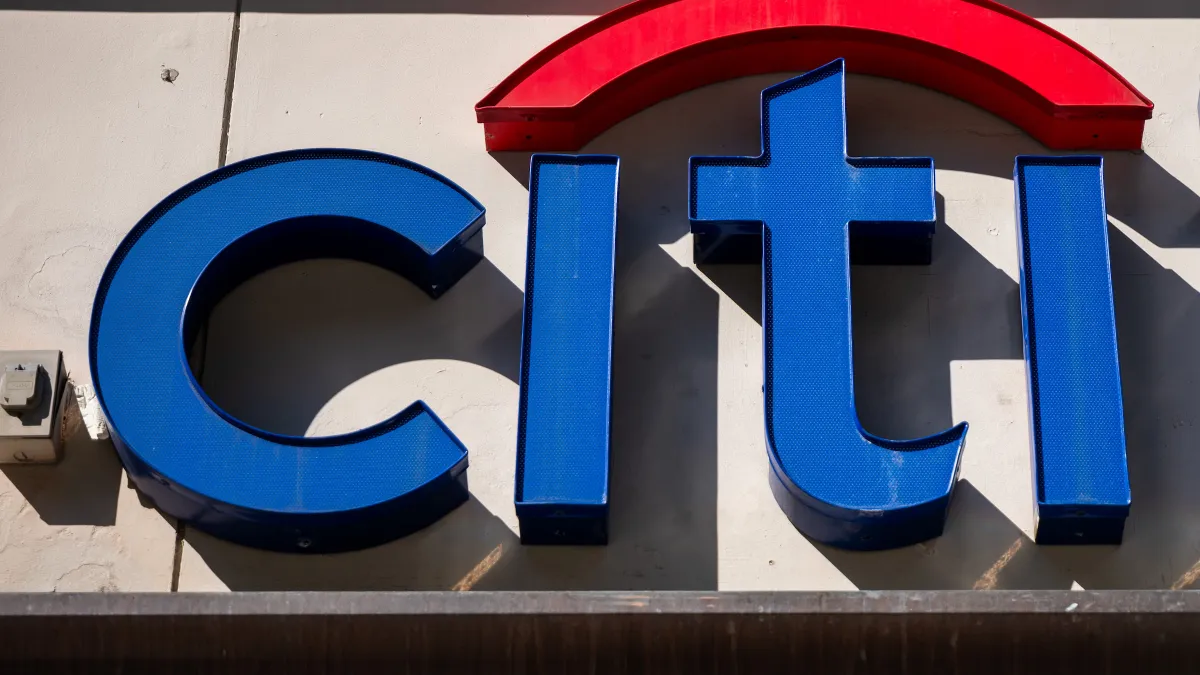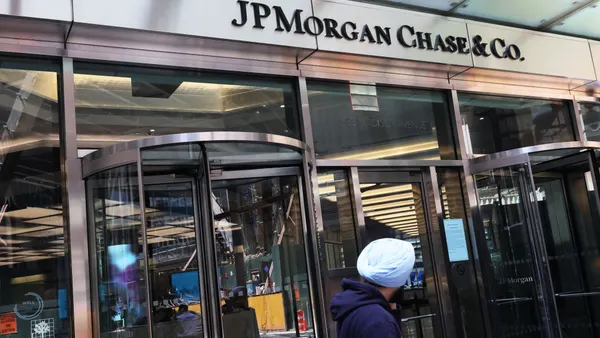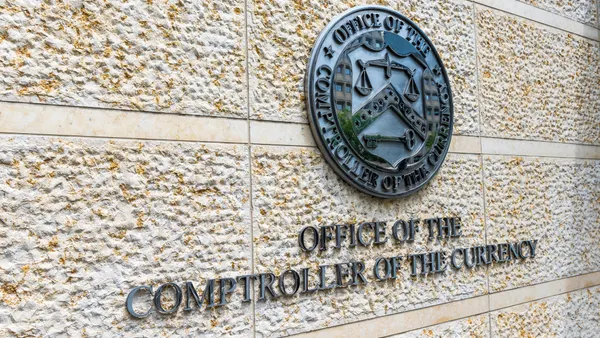Dive Brief:
- Bank sector net income dipped in the second quarter compared to the first, largely due to an increase in provision expenses tied to Capital One’s acquisition of Discover, the Federal Deposit Insurance Corp. said Tuesday.
- For the 4,421 FDIC-insured commercial banks and savings institutions, aggregate net income fell 1%, to $69.9 billion, in the quarter, according to the regulator’s quarterly banking profile.
- The “primary driver” of that profit decline was higher provision expense, which rose about 33.7%, to $7.6 billion, the FDIC said. That increase “was largely attributable to Capital One’s acquisition of Discover Financial Services, as accounting standards require the acquiring institution to recognize a provision expense related to certain acquired assets,” the regulator said.
Dive Insight:
Capital One’s acquisition of Discover – the largest banking deal of the past six years – closed in the second quarter. McLean, Virginia-based Capital One reported a $4.3 billion second-quarter loss in July, as it began digesting its acquisition of Riverwoods, Illinois-based Discover.
Discover-related expenses in the second quarter totaled $9.4 billion, counting money set aside for some of the bank’s loans.
Capital One – whose assets rose 34% with the purchase, to $659 billion – also said in July Discover integration costs will exceed the $2.8 billion estimate originally shared. Capital One spent about $409 million on Discover integration expenses in the first half of the year.
The deal was originally estimated at $35.3 billion when it was announced in February 2024, but the fair value purchase consideration was actually $51.8 billion when the deal closed May 18.
FDIC-insured banks reported a return on assets ratio of 1.13% in the second quarter. Community bank profits rose 12.5% from the first quarter, to $7.6 billion.
Second-quarter loan growth increased compared to the first quarter, with total loan and lease balances growing about 2.1%, or $263.7 billion. Still, the industry’s annual rate of loan growth in Q2 was 4%, compared to the pre-pandemic average of about 4.9%, the FDIC said.
Domestic deposits also rose, for the fourth consecutive quarter, by 0.6%, or $101.5 billion.
The number of banks on the FDIC’s “Problem Bank List” – lenders with a CAMELS composite rating of four or five – fell by a net of four, to 59 banks, during the second quarter. That number makes up about 1.3% of total banks, “which is in the middle of the normal range for non-crisis periods of 1 to 2 percent of all banks,” the regulator said.














